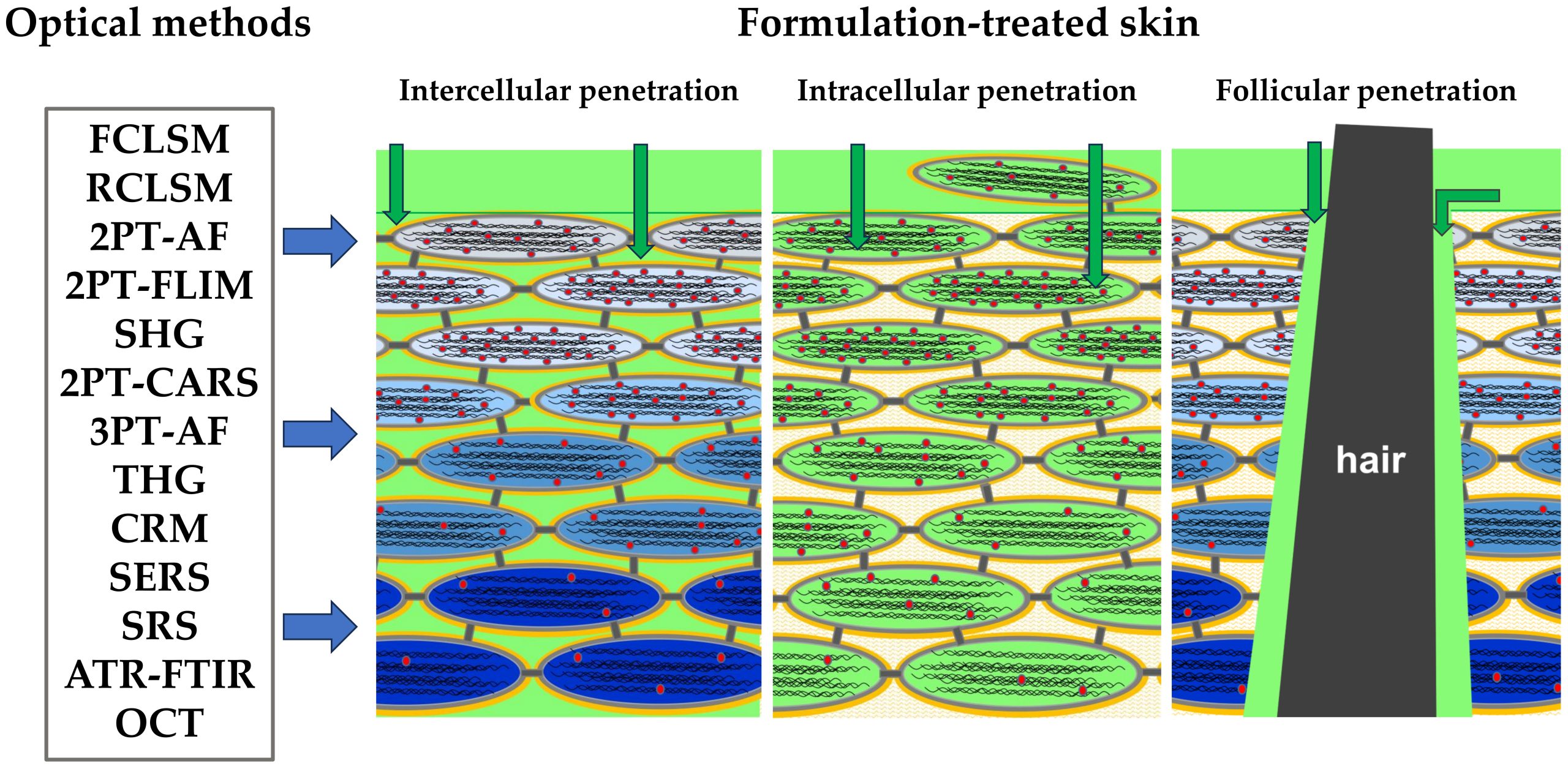Optical Methods for Non-Invasive Determination of Skin Penetration: Current Trends, Advances, Possibilities, Prospects, and Translation into In Vivo Human Studies

Information on the penetration depth, pathways, metabolization, storage of vehicles, active pharmaceutical ingredients (APIs), and functional cosmetic ingredients (FCIs) of topically applied formulations or contaminants (substances) in skin is of great importance for understanding their interaction with skin targets, treatment efficacy, and risk assessment—a challenging task in dermatology, cosmetology, and pharmacy. Non-invasive methods for the qualitative and quantitative visualization of substances in skin in vivo are favored and limited to optical imaging and spectroscopic methods such as fluorescence/reflectance confocal laser scanning microscopy (CLSM); two-photon tomography (2PT) combined with autofluorescence (2PT-AF), fluorescence lifetime imaging (2PT-FLIM), second-harmonic generation (SHG), coherent anti-Stokes Raman scattering (CARS), and reflectance confocal microscopy (2PT-RCM); three-photon tomography (3PT); confocal Raman micro-spectroscopy (CRM); surface-enhanced Raman scattering (SERS) micro-spectroscopy; stimulated Raman scattering (SRS) microscopy; and optical coherence tomography (OCT).
This review summarizes the state of the art in the use of the CLSM, 2PT, 3PT, CRM, SERS, SRS, and OCT optical methods to study skin penetration in vivo non-invasively (302 references). The advantages, limitations, possibilities, and prospects of the reviewed optical methods are comprehensively discussed. The ex vivo studies discussed are potentially translatable into in vivo measurements. The requirements for the optical properties of substances to determine their penetration into skin by certain methods are highlighted.
Download the full study as PDF here: Optical Methods for Non-Invasive Determination of Skin Penetration: Current Trends, Advances, Possibilities, Prospects, and Translation into In Vivo Human Studies
or read it here
Darvin, M.E. Optical Methods for Non-Invasive Determination of Skin Penetration: Current Trends, Advances, Possibilities, Prospects, and Translation into In Vivo Human Studies. Pharmaceutics 2023, 15, 2272.
https://doi.org/10.3390/pharmaceutics15092272

